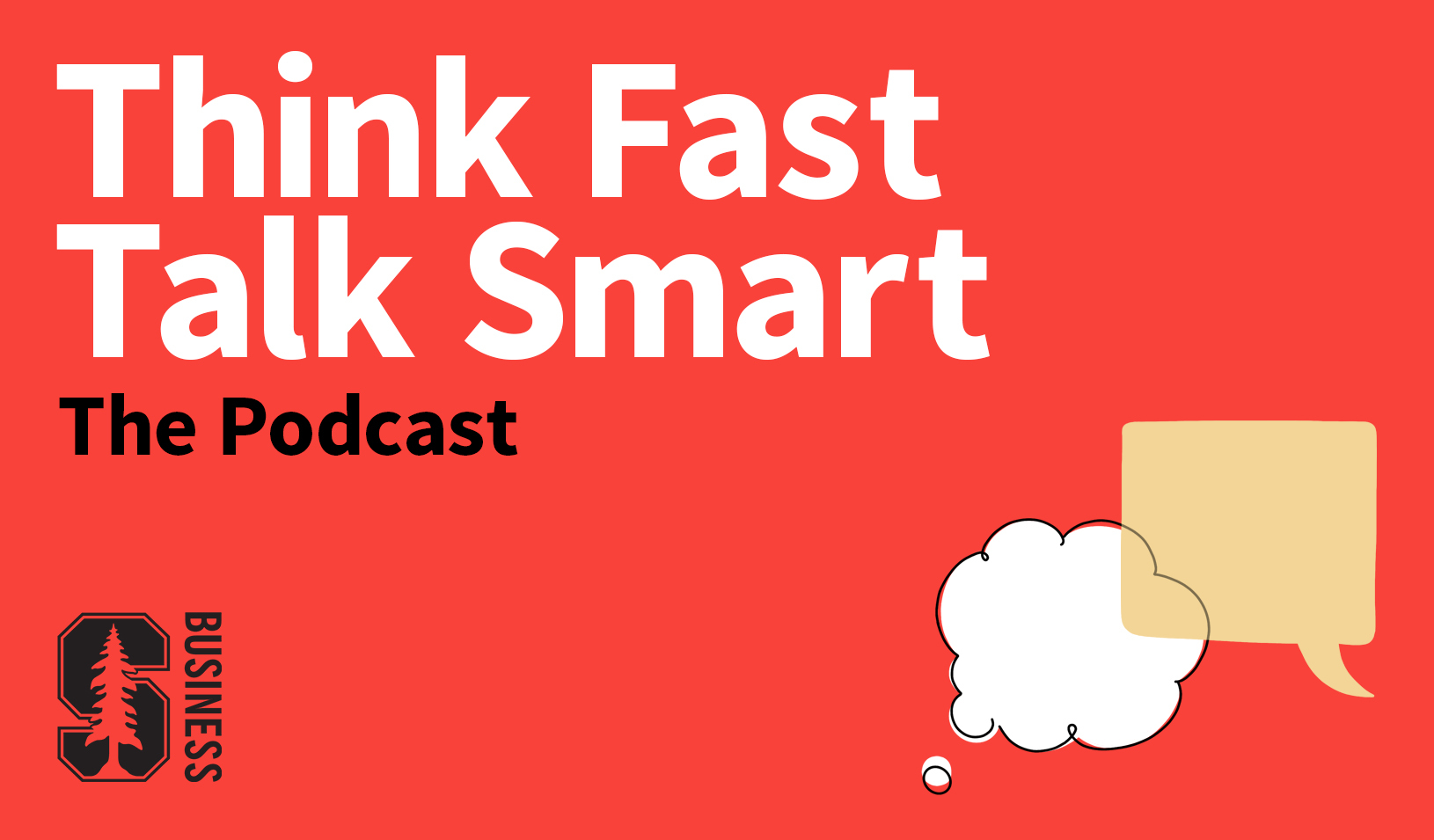Matt Abrahams: A Good Question Can Be the Key to a Successful Presentation
A Stanford GSB lecturer and expert on public speaking explains how you can become a more compelling and confident presenter by asking – not telling – in the right situations.
July 25, 2014
An audience member at a speech in San Francisco. (Reuters photo by Beck Diefenbach)
Of all the tools and techniques a speaker can use to make a presentation more effective, the simple question is the most versatile. Think of it as the Swiss Army Knife of presenting. A well-timed question can accomplish a myriad of communication tasks, from building intrigue to fostering audience engagement, helping you remember what to say, and even calming your speaking anxiety. Leverage questions, and you can become a more compelling and confident presenter. Here’s how:
Questions Connect with the Audience
Audience connection is the key characteristic that distinguishes a memorable presenter from an average one. Are audience members participating with the speaker, or simply listening to the speaker? Questions provide a great way to foster engagement. Questions by their very nature are dialogic. They’re two-way: You ask and your audience responds. I recommend using three types of questions throughout your presentation to get your audience’s attention:
- Rhetorical questions build intrigue. Asking your audience a question for effect (rather than one you expect them to actually answer) prompts them to think about the issue.
Example: “Would you believe that companies are making robotic honeybees to pollinate crops in locales where bees are dying off?” - Polling questions make the audience part of your point. When asking your audience to respond to your query, be sure to signal how you want them to do so (e.g., model raising your hand as you ask your question, or explain how the online poll works if you are virtually presenting) and comment briefly on the response you get (e.g., “Just as I expected, about 50% of you … ”).
Example: “How many of you have ever been stung by a honeybee?” - “What if?” questions root your presentation in time. Inquire about a possible future or the historical past; and as with rhetorical questions, you may not expect a literal response, but you definitely focus your audience’s attention on the time period you’re describing.
Example: “What would it be like if all crops were pollinated by robo-honeybees?” Or, “Remember when modern science made it possible for genetically modified vegetables to yield more crops?”
Questions Build Your Confidence
Many speakers are anxious because they feel they are under the harsh spotlight of an audience who is constantly evaluating them. But, interestingly, incorporating questions from the moment you start planning can help you feel more confident about every aspect of presenting. Here are two ways to use questions in planning to improve your delivery:
- Ask yourself, “What does my audience need to hear from me?” Instead of seeing speaking as a performance, think of it as being in service of your audience’s needs – this shifts the attention away from you and onto your audience. The most useful way I know to focus on your audience is to start by asking yourself the simple question: “What does my audience need to hear from me?” This not only helps you tailor your message to your audience, but it also reminds you that they are the ones in the spotlight. Make this question your mantra as you prepare and practice your presentations.
- Outline your talk using questions. When writing your next outline, create a list of questions to serve as prompts for what you intend to say. I loathe speaking manuscripts and full-text speaker notes, which only invite memorization and actually increase performance anxiety. An outline, on the other hand, is a very practical tool to help speakers prepare and deliver. And the power of a question-based outline is twofold: First, it allows you to feel more confident because you know the answers to your questions – you no longer need to worry you might not know what to say. Second, you will be more conversational, since you are simply answering your audience’s unasked questions, and conversational delivery is often better remembered by audiences.
When you next face preparing for and delivering a presentation, consider using the MacGyver of communication tools, the question. For just about any task at hand, it can yield all kinds of benefits for you and your audience.
For media inquiries, visit the Newsroom.
Explore More

Speak Your Truth: Why Authenticity Leads to Better Communication

When Words Aren’t Enough: How to Excel at Nonverbal Communication



